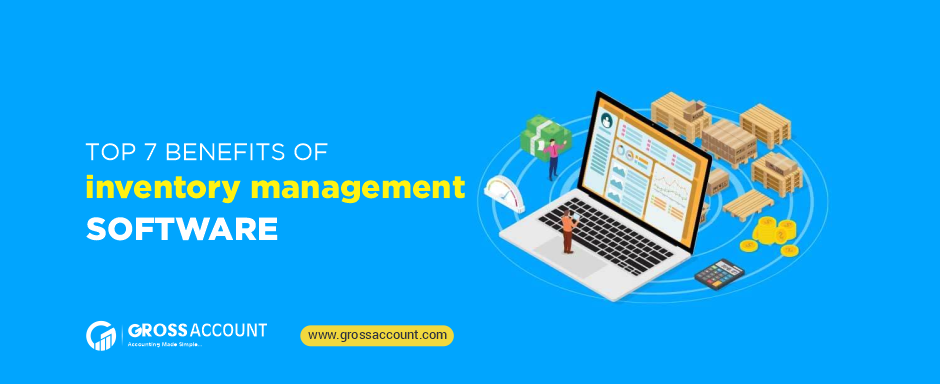Introduction
In this article, we discuss about what is an inventory management system? what are the uses of inventory management? And nowadays what are the highest 7 benefits that help you to grow your business.
Ok, let’s start.
What is Inventory Management System (IMS)?
Inventory management is an approach of Sourcing, storing and selling inventory – both raw materials and finished goods (Product).
In Business, related word inventory means right stock at right levels at right time.
Another definition:
Inventory management includes aspects such as controlling and overseeing purchases — from suppliers furthermore as customers — maintaining the storage of stock, controlling the number of product available, and order fulfilment.
It helps companies to spot identify which and the way much stock order at what time. It tracks inventory from purchase to sale of products.
Once Stock is Sold, inventory becomes revenue. Before it sells, inventory ties up cash. Therefore, an excessive amount of stock costs money and reduces income.
Read more : How to select the best accounting software for your business?
Inventory Turnover?
One measurement of excellent inventory system is inventory turnover. Inventory turnover shows that how often stock is sold in a very period. A good business does not want more stock than sales. Poor inventory turnover can cause to deadstock.
What are the various forms of Inventories?
- Raw materials
- Work-in-Progress (WIP)
- Finished Goods
- Decoupling Inventory
- Safety Stock
- Packing materials
- Cycle Inventory
- Service Inventory
- Transit
- Theoretical
- Excess and Maintenance
- Repair and Operation (MRO)
Inventory Vs Stock
Inventory is usually called stock in a retail business. Across industries, it’s more broadly refers to stored sales goods and raw materials and parts utilized in production. People are confusing between Inventory and stock. Both are different from one another.
Top 7 Benefits of Inventory Management System in 2021
- Reduced Risk of Overselling
- Data Security
- More profitable business decisions
- Greater Cost-Savings
- Better Product visibility
- Avoidance of Stock-outs and Excess Stock
- Improved Business negotiations
1) Reduced Risk of Overselling
Nowadays major challenge for online sellers is Overselling. Other challenges are leading to loss of control, disappointed customers, being suspended from marketplaces.
It helps to trace what’s in stock and backorder, so you don’t oversell products.
By synchronizing your orders and inventory across each of your online marketplaces and eCommerce platforms, ensuring that stock levels are adjusted when you create a sale.
2) Data Security
In IMS, you can restrict the user by the requirement of your need. Also, you can restrict (Banned for few time) all users and provides them rights so that no mistake place. Another benefit is that it provides security at all levels.
You can say that – you give rights to a user who can see what data, who can retrieve and access what data information. By every user restricted so there is no chance for data leakage(loss).
3) More Profitable Business Decision
An effective IMS can provide invaluable sales data, with data-driven decisions.
It provides you with the tools needed to create strategic decisions.
So, with the ability to figure out your inventory turnover rate, you will also be able to identify opportunities for reducing the amount of inventory.
4) Greater Cost-Savings
By streamlining your IM processes, you not only stand to eliminate the inventory costs related to with human error, but you can also get pleasure from further cost savings.
stock costs money until it sells. Inventory is additionally at risk of theft, loss from natural disasters or obsolescence.
5) Better Product Visibility
There is no time and effort it can take to track down the affected products without batch tracking functionality.
We’re talking for countless hours and diverse headaches.
In fact, without full product traceability and also the ability to simply locate necessary batches, attempting to resolve the problem along with your supplier can be a significant challenge.
6) Avoidance of Stock-outs and Excess Stock
Better planning and management help a business minimize the number of days if any, that an item is out of stock and avoid carrying too much. little stock can result to a stock-out, unhappy customers and potential loss of sales.
With Stock Control, you’ll be able to track low stock levels and identify the re-order points for each product, in turn avoiding the occurrence of stock-outs.
7) Improved Business Negotiation
By using an IMS with batch tracking capabilities, you may have much better product traceability and subsequently, be ready to access valuable information with potential negotiations with suppliers.
-
More Productivity
Good IM solutions save time that could be spent on other activities.
-
Increased Profits
A better understanding of both products availability and demand leads to higher inventory, which leads to great money(revenue).
Inventory Management Challenges
- Getting accurate Stock Details
- Poor Processes
- Changing Customer Demand
- Using Warehouse space well
Read more : Everything you need to know about inventory management system
Conclusion
Choosing an IM system could be a matter of identifying the features your business needs. Do you need to track stock movements and placement within a warehouse, or plan inventory and track trends, or both?
Inventory management is important within the supply chain because a corporation must balance customer demand with storage space and cash limitations. Inventory management provides visibility into the supply chain. So, managers can coordinate lead times for deliveries with production timetables.
A system that provides your organization with real-time visibility into inventory can help stakeholders make critical business decisions. You should also be aware of a stock’s condition, especially if you’re addressing with perishables.






